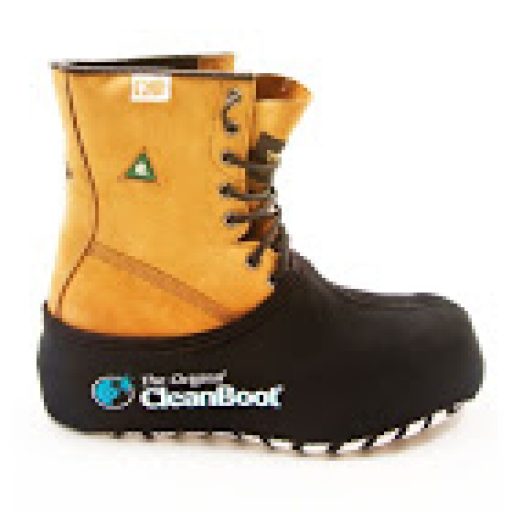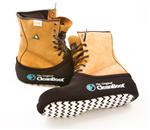 The Clean Boot Blog
The Clean Boot Blog
During the COVID-19 Global pandemic, there have been many short comings with regards to the supply and distribution of essential PPE (Personal Protective Equipment) for frontline workers and the general public. Supply Chains have seen dramatic shortages caused by misinformation, panic buying and stockpiling.
Essential PPE determined by the WHO (World Health Organization) is outlined as the following:
Rational Use of Personal Protective Equipment (PPE) for Coronavirus Disease (COVID-19) Interim guidance 19 March 2020 World Health Organization
https://apps.who.int/iris/bitstream/handle/10665/331498/WHO-2019-nCoV-IPCPPE_use-2020.2-eng.pdf
- Medical Gowns
- Gloves
- Eye Protection (Face Shield or Goggles)
- Respirator N95 or FFP2 standard, or equivalent
The Coronavirus has the ability to live on surfaces for up to 5 days experts have discovered. This includes but is not limited to, shopping carts, door handles, cardboard boxes, plastic items etc.
Scientists and experts have now stated that shoes/ boots are hot spots for the spread of bacteria and germs.
“Infectious disease specialist Mary E. Schmidt warns that the coronavirus could survive on rubber, leather and PVC-based soles for five days or more.” https://drmaryeschmidt.com/
Although the risk is lower for foot contamination and spread to the facial area, if shoes/ boots are worn in high traffic areas (Grocery Stores, Transit, Malls, workplaces etc) the risk increases and has the potential to spread the virus.
However, whether you wear sneakers or work boots, it’s important to pay attention to the sole. The sole of shoes and boots are the breeding ground of more bacteria,and viruses than the upper part of a shoe.
The soles of shoes/ boots are typically made of non-porous materials, such as rubber, leather and PVC, and can carry high levels of bacteria, according to a study published by Charles Gerba, a microbiologist and professor at the University of Arizona.
So what is the solutions for footwear PPE?
Most of the PPE being used by the general public and frontline health care workers is disposable. Contributing heavily to our landfills, rivers lakes and oceans. Paper and Plastic disposable PPE is great for minimizing the spread of infections viruses and diseases. But not great for the environment or the pocketbook.
But is there another way?
Already manufactures and consumers that own 3D printers have developed reusable face shields and N95 Respirator Masks, to give frontline workers and the general public an alternative to the disposable versions that are in short supply and high demand. https://abcnews.go.com/Politics/military-3d-printing-face-shields-reusable-n95-masks/story?id=70001755
What does this look like for footwear?
Currently, the use of paper and plastic disposable booties is pervasive in the healthcare industry, general public and contracting. But there has to be a better option. A product that can be washed to kill the COVID-19 virus. A product that is reusable that doesn’t contribute to single use plastic entering our rivers, lakes and oceans. Lastly, it needs to be more economical for the end-user, rather than continually spending money on disposable products.
The answer to all these requirements is The Original CleanBoot®. A Washable, Reusable, 100% Neoprene overshoe with a rippled sole for extra grip on finished flooring!!
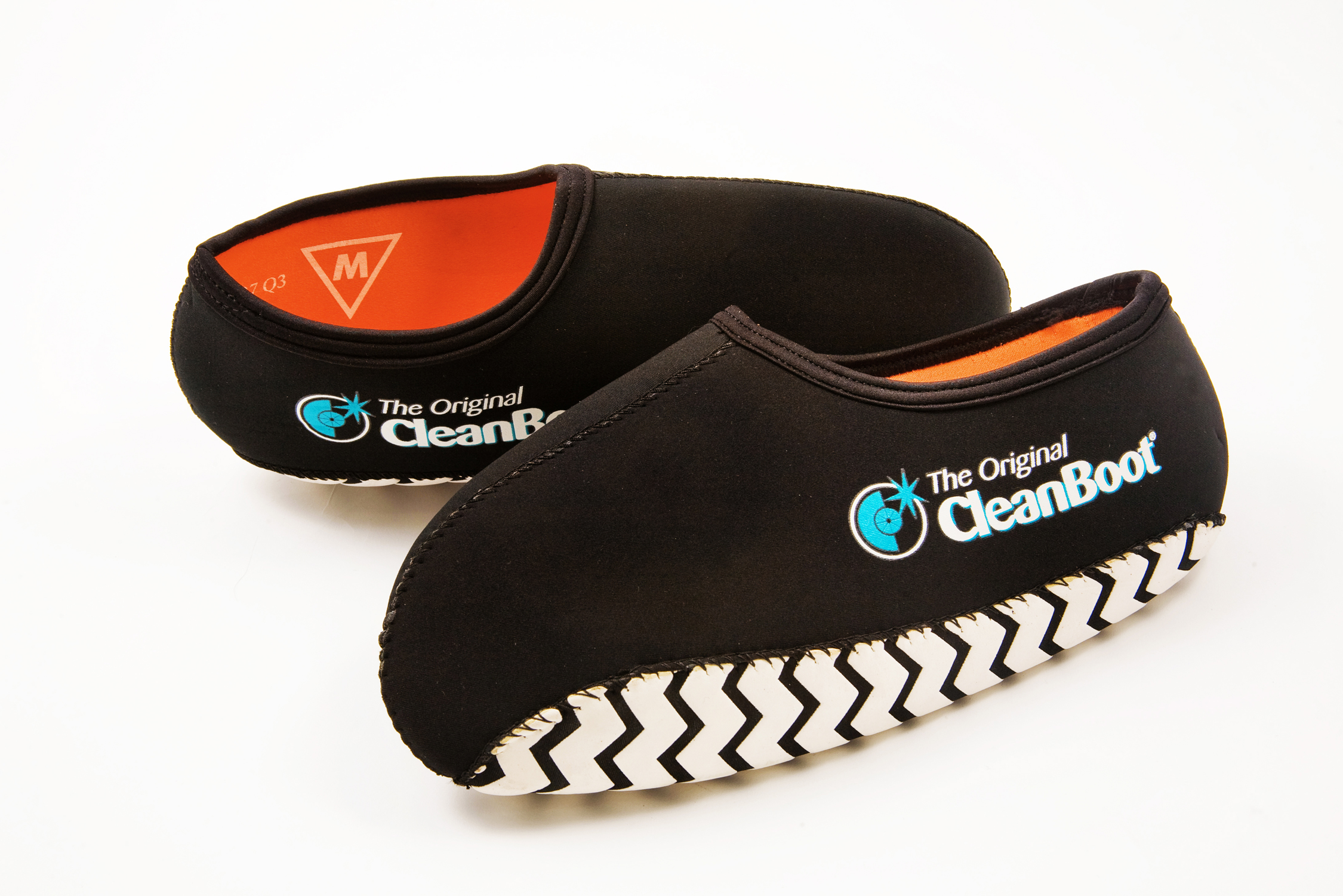
The Original CleanBoot® can be worn everyday with a life span of approximately 3-6 months, daily use.
So for frontline workers that are concerned about bringing COVID-19 home on the soles of their shoes/ boots, The Original CleanBoot® can be worn in the car, taken into the home and washed frequently to minimize the risk and exposure to family and loved ones.
For contractors and homeowners, The Original CleanBoot® is a great solution to, “Keep the outside out, and the inside clean.” Minimizing the chances of bringing the Coronavirus into a home on the sole of their shoes/ boots.
So, when Health Care & Government officials eventually announce the expansion of Essential PPE to include footwear protection, remember The Original CleanBoot® is an alternative that can avoid the shortages that will be experienced in the disposable bootie market and provide an excellent alternative to protect you, the environment and your budget.
The Original CleanBoot® can be purchased online in Canada, US, Australia, UK and Europe.
Or contact us at admin@thecleanboot.com to see if there is a local distributor.
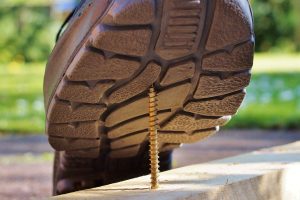
Let’s admit it, you can conquer the world in the right pair of shoes. Equipping your workers with a protective pair of work boots/shoes can not only prevent them from foot injuries but it also enhances their productivity and lengthens their working hours.
To comply with federal laws practiced by OSHA, it’s now mandatory for industrial organizations to provide their employees with a pair of protective shoes. The Occupational Safety and Health Administration has enforced numerous rules and regulations related to safety measures that incorporate the prevention of foot, ankle or knee injuries in the workplace. The regulations have been applied under CFR 1910.136 (Section 29).
Criterion
According to this law, it’s compulsory for workers to determine that each worker is using protective shoes, particularly in high-risk areas where several types of foot injuries could occur. Moreover, workers are also required to use such footwear in regions where electrical hazards are present.
OSHA recommends that specialized protective footwear should be used in:
- Lethal or caustic materials
- Electricity shocks or other electricity-related problems
- Regions affected by static electricity
- Places with heavy objects
- Razor-sharp objects that can harm your foot
- Melted metal that can cause severe burns
- Slick or unstable surfaces
The Importance of Maintaining OSHA Required Footwear on Jobs
Failure to comply with OSHA standards may bring on warnings and penalties. The only way to avoid such fines is to strictly adhere to OSHA-provided guidelines.
Noticeably, the authority isn’t enforcing these regulations on all types of companies. They are pursuing those who are not considering the importance of protective footwear for their workers. OSHA’s approach to demonstrating the significance of protective shoes is also very unique. They are giving comparative examples of how a firm can save hospitalization charges or insurance reimbursements by just investing in the right pair of shoes/boots for their employees.
The importance of using preventive footwear is evident from the following points:
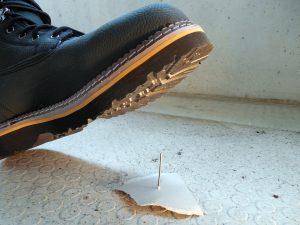
It Protects From Heavy Objects
Places, where man and machine are working at the same time, can cause severe foot or toe injuries. Steel toe boots can be a good option to safeguard feet from crushing injuries.
Protects from Pointed Objects
As protective shoes come with heavy soles, they provide incredible support and protection against sharp objects. These pointed objects are generally found at construction sites and a simple, conventional soft sole is definitely not enough to provide protection.
Protects from Slips and Falls
Slick and slippery surfaces can also cause severe workplace accidents. Ideally, businesses should follow proper housekeeping guidelines to protect its workers from serious injuries. Proper footwear can also be used as one of the measures to prevent such problems. Shoes with suitable traction can prevent slips and trips and therefore should be used by workers who work on wet or slippery floors.
Prevents Burns and Fatigue
Generally, workers are required to be on their feet all the time. This may result in muscle pain, tiredness, and fatigue. Footwear that comes with padded support results in comfort, reduces pain and alleviates muscle strain.
Moreover, protective footwear can also prevent workers from chemical burns, melted metal or other harmful substances.
Protection from Harsh Weather
Extreme weather conditions can trigger numerous foot injuries including frostbite and Raynaud’s syndrome. Workers who work in wet, damp or cold environments are usually at high risk. Since protective footwear is waterproof in nature, it provides enough protection against harsh weather conditions.
Conclusion
According to OSHA CFR 1910.136(a),
“The employer shall ensure that each affected employee uses protective footwear when working in areas where there is a danger of foot injuries due to falling or rolling objects, or objects piercing the sole, or when the use of protective footwear will protect the affected employee from an electrical hazard, such as a static-discharge or electric-shock hazard, that remains after the employer takes other necessary protective measures.”
As you can clearly see, the right pair of shoes/boots can protect your workers from many disastrous problems. Complying with OSHA regulations can make your workers comfortable and safe. It will help them focus more on their tasks and will eventually result in increased productivity and output for your business.





